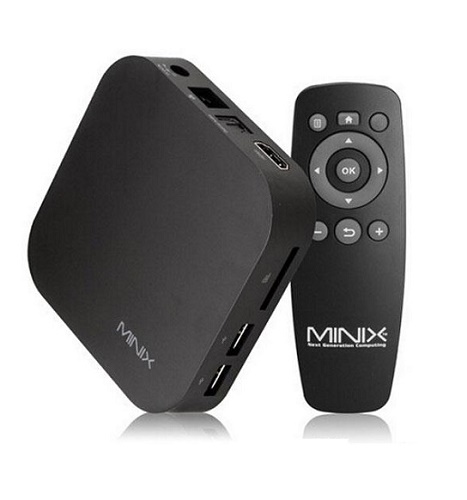I was combing through a set of To Dos when I came across a note to try Octoprint for Android, which is an Android application that wraps a Linux userland where it installs OctoPrint, allowing it to run on pretty much any old Android phone you might have lying around.
And since Raspberry Pis are still impossible to get hold of (even though I still have spares), I thought it worthwhile to investigate whether it would run on an old Android set-top-box I have been meaning to re-purpose, the Minix Neo X5 mini:

The thing runs Android Kitkat (4.4), which means that by today’s standards it’s barely more useful than a doorstop.
I kept a couple around because it has both Ethernet and optical audio out, which I considered using for room speakers a long while ago, but also for nostalgia.
These were the boxes we used for the Codebits 2014 digital signage system, and at the time they had very decent WebKit graphics acceleration and were able to render all sorts of things on top of live video, although its paltry dual core CPU can barely handle doing anything of substance:
But what about Octoprint for Android, then?
Well, in the limited testing I could do (my Prusa now runs Klipper, and although Octo4a seems to support it, I only found out about that after unplugging it), it works pretty great - once it gets started, mind you.
You can set it to run automatically when your device powers on, and you get the full Octoprint experience over the browser: remote printing, G-code viewing, printer monitoring, and (if you’re using a phone) access to the camera to view your printer remotely.
There are two caveats worth keeping in mind, though:
- Although it downloads and installs the latest Octoprint, the sandbox poses some challenges, so depending on your device the USB serial tricks it does might not work well, and you might need to hunt around for it on your network since it lacks the ability to do
Bonjourannouncements. - On low-end hardware like the Minix it can take the better part of three minutes to be available over the web.
But if you’re in a pinch and really want to get your 3D printer online on your LAN (some people don’t, although I fail to see the fascination of wrestling with USB pens or memory cards when you can just click on a button), consider giving it a shot.